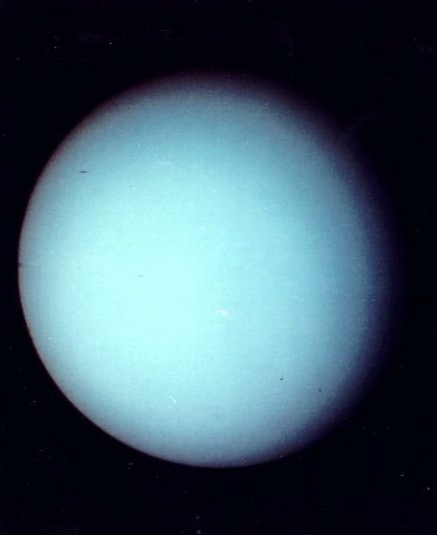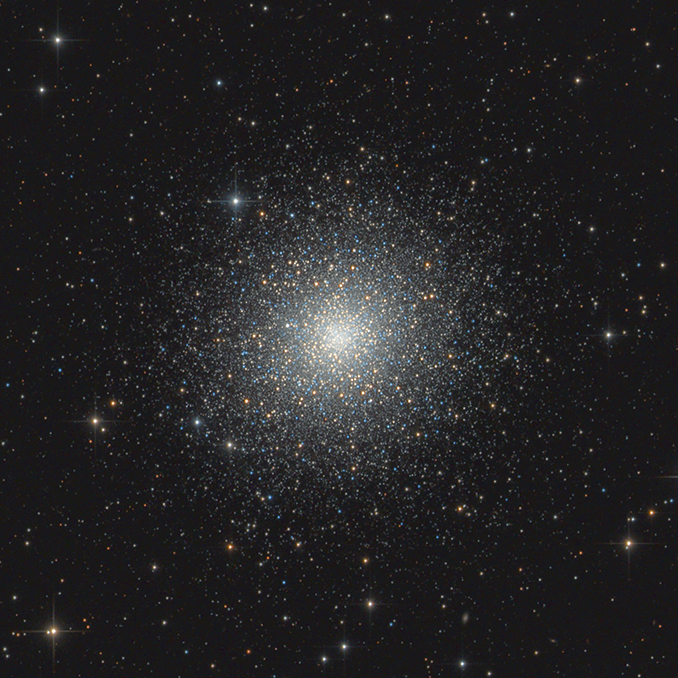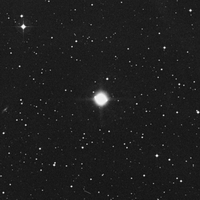STARLOG
WATERLOGGED
OCTOBER 9, 2017
| Observer: |
Tom Campbell |
| Location: |
College Station, Texas (Long: 96°17'W Lat: 30°37'N) |
| Telescope: |
Zhumell 12" f/5 Dobsonian |
| Eyepieces: |
Explore Scientific 18mm (83x)
Explore Scientific 11mm (136x) |
| Lenses: |
Celestron Luminos Barlow (2.5x) |
| Weather: |
The sky was mostly clear, but clouds would drift across the sky intermittently. Temperature was in the upper 70s (F) and there was a slight breeze. |
I had no real observing plans tonight, but when I walked out to get the mail around sunset, the partly cloudy skies were beginning to clear. I quickly set up Zoomy in the back yard.
I had no observing list prepared, so I began by visiting a few old friends while waiting for the sky to darken a bit more and while I decided what I wanted to look at.
My first target was Saturn. I had managed to take a few decent images of it last week and was hoping for even better ones. I popped in my 18mm eyepiece (83X) and took a look. There she was, bright rings on display and even a few moons. But it looked like atmospheric currents were interfering with the image.
I popped the barlow on (208X) just to make sure. Yeah, passing air currents were making Saturn stretch and wobble like a three-legged Dachshund. Maybe my primary mirror just needed to adjust to the ambient temperature. I would try again later.
I looked around again for another target. I thought about M13 in Hercules. I looked to the north, towards the city light dome. To my surprise, I was actually able to make out all four stars of the Keystone in Hercules tonight. There are many nights when I can't. I took aim at the globular cluster. The combination of twilight and light pollution was washing it out. It still looked nice, but nothing like it usually does.
Looking up again, I noticed the Summer Triangle asterism of stars overhead. A few clouds were passing through parts of Cygnus and Aquila, but Lyra was still clear. I decided to take a quick peek at M57.
The Ring Nebula was nice at 136X. It appeared as a large and bright donut, slowly fading to the black center. There were moments when the edges would start to show hints of green and pink, but they were very fleeting.
What next? Pegasus was well positioned in the sky, but I had already seen M15 a couple of times recently. I wonder if anything else was near there? I opened up the SkySafari app on my phone and took a look around the area.
I spent several minutes trying to detect the galaxy NGC 7448 near Markab, but to no avail. The sky just wasn't going to get dark enough to see it.
Then I noticed that Neptune was in nearby Aquarius. I haven't visited the Water Bearer constellation for awhile, so that would be a good place to begin.
| Neptune |
Aquarius |
Planet |
9:25pm CDT |
 |
Tonight the gas giant is located right next to another star, giving it the appearance of being a double star system at low power. The only thing giving it away is that the star is an orange pinpoint of light whereas Neptune is a small, bright blue disk. No surface details could be seen, but it still looks amazing. The best view was at 341X, although it was starting to get a bit difficult to focus. |
| |
I knew that Neptune's sister planet Uranus was also up right now, so I thought I'd visit it as well.
| Uranus |
Pisces |
Planet |
9:35pm CDT |
 |
At 341X, I could see a definite disk. It usually appears a pale blue but tonight was more of a creamy color - perhaps due to its low altitude. I could see no details at all, but it was quite a bit larger than Neptune. It is pretty easy to find right now, right along one of the lines of stars in Pisces. |
| |
A few mosquitos were hovering around me but I swatted at them a few times and tried my best to ignore their buzzing around my head. I dove back into Aquarius again.
| M 2 |
Aquarius |
Globular Cluster |
9:50pm CDT |
 |
This is a gorgeous cluster! I was able to crank up the magnification on this one - 341X. It appeared large and well defined, with pinpoint stars all the way from the edges to the middle. I looked at M13 earlier tonight and M2 looked even better, although to be fair, M13 was half buried in some local light pollution.
It has been quite a while since I last viewed M2. In fact, looking through my logs, this was only the third time I'd logged the cluster, and each time in a different telescope.
Here's how it looked in my 60mm refractor, back in 2000: "The Moon was in Capricornus tonight, so nearby Aquarius was kind of washed out with glare. Nevertheless, I thought I'd try to bag M2 tonight as well. To find it, I starhopped from about 1/3 the distance from β Aqr to ε Peg (the nose of the Flying Horse).
At low power, this is a pretty dim globular. Stepping up the resolution didn't reveal any real detail, but I was able to see a couple of nearby dim stars in the same field of view.
At high power, its definitely larger and globular, but I was still unable to make out any individual stars. The contrast was enough at high power, however, that it is probably a pretty decent cluster. I've put it on my list of things to observe again when the Moon isn't interfering."
A year later, I had my 8" dob and gave M2 another look: "After the other clusters I've viewed tonight, this one is a real breath of fresh air. It's pretty large, but it still fits nicely in the field of view at 305x. The cluster appears symmetrical, and its stars are just barely resolvable. With my eyes relaxed, I can detect hundred of pinpoint stars. I would guess that the stars are about as faint as they can be and still be individually resolved in my telescope. With another couple of inches of aperture, this would probably be an outstanding globular."
I was right. It is an outstanding globular. I can't believe I waited 16 years to view it again. |
| |
| NGC 7009 (Saturn Nebula) |
Aquarius |
Planetary Nebula |
10:00pm CDT |
 |
This is a large and bright planetary. At 341X, it looks like a fuzzy, defocused Saturn. It is oval and appears to have a thin line running right down the middle of it. The core seems to have some mottling. |
| |
| M 72 |
Aquarius |
Globular Cluster |
10:20pm CDT |
 |
As much as M2 is an impressive globular, M72 is equally unimpressive. It is a very faint smudge which requires averted vision to see clearly. The best view was at 136X. No individual stars could be detected, but the cluster appeared to be not quite round. |
| |
A couple of my neighbors had gone to bed and turned out their back porch lights. This made the sky noticeably darker. Unfortunately, the mosquitos were just getting started and thought I was an all-night juice bar.
| NGC 6818 (Little Gem) |
Sagittarius |
Planetary Nebula |
10:40pm CDT |
 |
This is a nice planetary. At 341X it appeared not quite round, with a couple of edges squared off. There was a bit of mottling visible with averted vision. |
| |
The Moon was rising above the rooftops but was still half-hidden behind a large tree. Nearby, the Pleiades beckoned me as well. I was torn. I really wanted to stay out a bit longer and enjoy the night, but tomorrow was a work day and I needed to get some rest.
Another stinging bite from a mosquito decided it for me. I better head inside. The stars would still be there next time.





